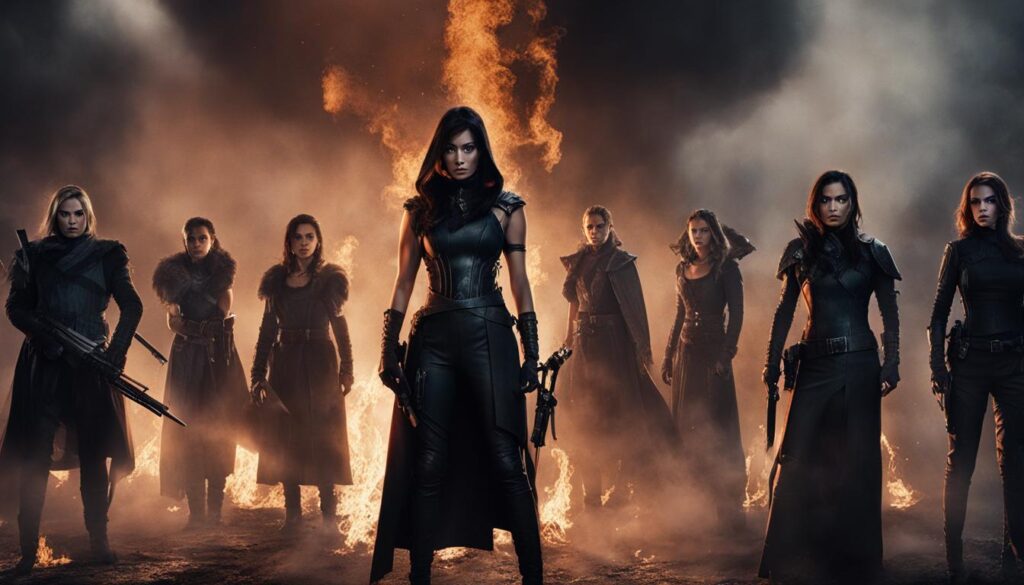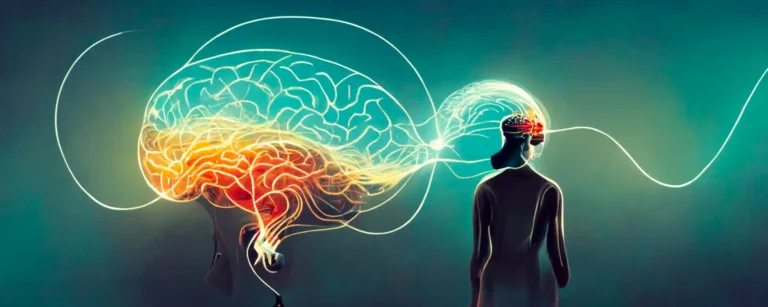As readers, we are often drawn to the captivating allure of a villain. There is something undeniably intriguing about a character who walks the line between good and evil, who challenges our moral compass and makes us question our own beliefs. And when that villain happens to be mad, it only adds to the complexity and depth of their character.
In many stories, the hero falls into the arms of the villain, either willingly or unwillingly. This trope has become a staple in literature, movies, and TV shows, leaving audiences on the edge of their seats as they watch the hero navigate their way through a dangerous and alluring world. But what is it about these villains that make them so irresistible? And how do spoilers play a role in shaping our perception of these characters?
In this blog post, we will delve into the complex dynamics of attraction between heroes and mad villains. We will explore the secrets revealed by spoilers, the unpredictability of the story, the manipulation of the villain, the moral quandaries faced by the hero, the motivations of the villain, the bonds of trust and treachery, the eternal battle between good and evil, and the perilous intersection of romance and insanity. By the end, we hope to gain a deeper understanding of why we are so drawn to these characters and the consequences of falling into their arms.
Unveiling the Secrets: A Comprehensive Breakdown of Spoilers
Spoilers have become an integral part of our reading and viewing experience. They can either enhance our enjoyment of a story or ruin it completely. In the case of a story involving a mad villain, spoilers can play a crucial role in shaping our perception of the character.
One of the most common spoilers in this type of story is the revelation of the villain’s true identity. Often, the villain is someone close to the hero, someone they trust and never suspect of being capable of such evil deeds. This twist adds a layer of complexity to the story and makes the hero’s journey even more challenging.
Another common spoiler is the villain’s ultimate goal or motivation. In many cases, the villain’s actions are fueled by a tragic past or a desire for revenge. This can make the character more sympathetic and relatable, blurring the lines between good and evil.
Spoilers also play a role in revealing the villain’s methods and tactics. Whether it’s through manipulation, deception, or sheer force, knowing how the villain operates can add tension and suspense to the story. It also allows us to understand the hero’s struggles and empathize with their predicament.
The Unpredictability of the Story
One of the most alluring aspects of a story involving a mad villain is its unpredictability. As readers, we never know what to expect, and that keeps us on the edge of our seats. Spoilers may reveal certain plot points, but they can never fully capture the twists and turns of the story.
The element of surprise is crucial in keeping the audience engaged and invested in the story. We want to see how the hero will navigate through the challenges thrown their way, and how the villain will react to their actions. This unpredictability adds depth and excitement to the story, making it a thrilling read or watch.
But at the same time, this unpredictability can also be frustrating. We may find ourselves rooting for the villain, only to have our hopes dashed when the hero triumphs. Or we may sympathize with the hero, only to be disappointed when they fall into the arms of the villain. This constant back and forth keeps us emotionally invested in the story and makes it difficult to predict the outcome.
Intrigue and Deception: Exploring the Villain’s Manipulation
Mad villains are often masters of manipulation. They know how to play with the hero’s emotions and manipulate them into doing their bidding. This adds a layer of intrigue to the story, as we try to decipher the villain’s true intentions and anticipate their next move.
One way villains manipulate the hero is by preying on their weaknesses. They may use past traumas or insecurities to gain control over the hero, making them more vulnerable to their schemes. This creates a power dynamic between the two characters, with the villain holding all the cards.
Another tactic used by villains is deception. They may present themselves as someone else, using a false identity to gain the trust of the hero. This makes it even more difficult for the hero to see through their facade and realize the true nature of the villain.
But what makes this dynamic even more complex is when the hero starts to develop feelings for the villain. This blurs the lines between manipulation and genuine attraction, making it difficult for the hero to discern the truth. And for the audience, it adds another layer of intrigue and suspense as we try to unravel the villain’s true motives.
The Hero’s Journey: Navigating a Path Through Moral Quandaries
The hero in a story involving a mad villain faces numerous moral quandaries throughout their journey. They are constantly forced to make difficult decisions that challenge their beliefs and values. And often, these decisions have consequences that can affect not only themselves but also those around them.
One of the most common moral quandaries faced by the hero is whether to trust the villain or not. As mentioned earlier, the villain may use deception and manipulation to gain the hero’s trust. But at the same time, the hero may see glimpses of goodness in the villain, making it difficult to fully condemn them.
This internal struggle adds depth to the hero’s character and allows us to see their growth throughout the story. We witness them grappling with their own moral code and trying to navigate a path through the gray areas of right and wrong.
Shades of Gray: Unraveling the Villain’s Motivations
In many stories, the villain is portrayed as purely evil, with no redeeming qualities. But in stories involving mad villains, there are often shades of gray when it comes to their motivations. They may have a tragic past that led them down a dark path, or they may believe that their actions are justified in some way.
This adds complexity to the character and makes them more than just a one-dimensional villain. We start to see them as human, with flaws and vulnerabilities, rather than just an embodiment of evil. And this can make it even more difficult for the hero to defeat them, as they struggle with their own feelings towards the villain.
But at the same time, it also raises questions about the nature of good and evil. Are these characters truly evil, or are they just products of their circumstances? This moral ambiguity adds depth to the story and forces us to question our own beliefs about morality.
Betrayal and Loyalty: Examining the Bonds of Trust and Treachery
Betrayal is a common theme in stories involving mad villains. The hero may feel betrayed by the villain, who they thought was on their side. But at the same time, the villain may also feel betrayed by the hero, who they believed would understand and accept them.
This theme of betrayal highlights the fragile nature of trust and loyalty. It shows how easily these bonds can be broken, especially when faced with conflicting loyalties and moral dilemmas. And it also raises questions about whether these bonds can ever truly be repaired.
But at the same time, we also see instances of unwavering loyalty between characters. Despite the betrayal and deception, there are moments of true connection and understanding between the hero and the villain. These moments add depth to the story and show that even in the midst of chaos and madness, there can still be moments of genuine human connection.
Good Versus Evil: The Eternal Battle for Moral Supremacy
At its core, a story involving a mad villain is a battle between good and evil. The hero represents the forces of good, while the villain embodies the forces of evil. And this eternal struggle between the two forces is what makes these stories so compelling.
But what makes this battle even more interesting is when the lines between good and evil start to blur. As we have seen, the villain may not be purely evil, and the hero may not be entirely good. This adds complexity to the story and forces us to question our own beliefs about morality.
We also see instances where the hero must make difficult choices that challenge their moral code. They may have to resort to questionable tactics or make sacrifices that go against their principles in order to defeat the villain. This raises questions about whether the ends justify the means and what it truly means to be a hero.
Love and Madness: Navigating the Perilous Intersection of Romance and Insanity
One of the most intriguing aspects of a story involving a mad villain is the presence of romance. We often see the hero falling for the villain, despite their better judgment. This adds a layer of complexity to the story and raises questions about the nature of love and attraction.
The villain’s madness can be alluring to the hero, who may see it as a sign of vulnerability and humanity. But at the same time, it can also be dangerous, as the hero risks losing themselves in the madness of the villain. This creates a perilous intersection between love and insanity, where the hero must navigate their feelings while also trying to defeat the villain.
This dynamic also adds tension and conflict to the story, as the hero is torn between their duty and their desires. And it also raises questions about whether love can truly conquer all, or if it is just another tool used by the villain to manipulate the hero.
The Consequences of Passion: Unraveling the Aftermath of Daring Love
In many stories, the hero and the villain’s relationship ends in tragedy. Whether it’s due to betrayal, conflicting loyalties, or simply the inability to reconcile their differences, their love often comes at a great cost. And this aftermath of daring love is what makes these stories so poignant and memorable.
The hero must deal with the consequences of falling into the arms of the mad villain, whether it’s facing the repercussions of their actions or dealing with the emotional fallout. And the villain must also face the consequences of their own choices, whether it’s through redemption or punishment.
But even in the midst of tragedy, there is still hope for the future. The hero may learn valuable lessons from their journey, and the villain may find some form of redemption. And as readers, we are left with a sense of closure, knowing that the characters have grown and changed throughout the story.
Conclusion
In conclusion, the complex dynamics of attraction between heroes and mad villains make for compelling and thought-provoking stories. Spoilers play a crucial role in shaping our perception of these characters, revealing their secrets, motivations, and methods. The unpredictability of the story keeps us on the edge of our seats, while the villain’s manipulation adds intrigue and deception to the plot.
As the hero navigates their way through moral quandaries and struggles with their feelings towards the villain, we are forced to question our own beliefs about good and evil. And in the midst of betrayal and loyalty, we see the fragile nature of trust and the power of human connection.
But perhaps most intriguing of all is the intersection of love and madness, where the consequences of daring love can be both tragic and hopeful. In the end, falling into the arms of a mad villain may lead to unexpected and life-changing journeys for both the hero and the reader.








